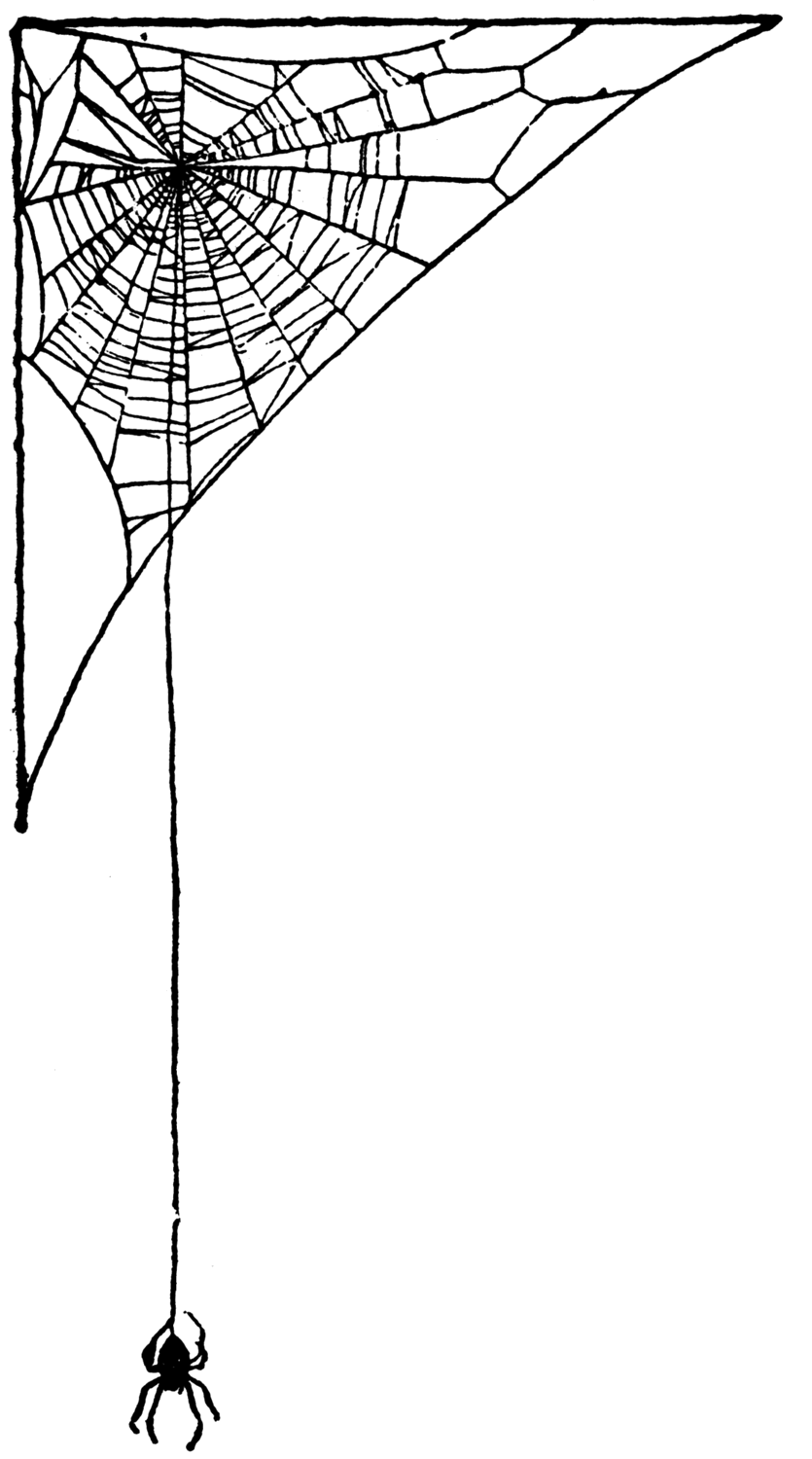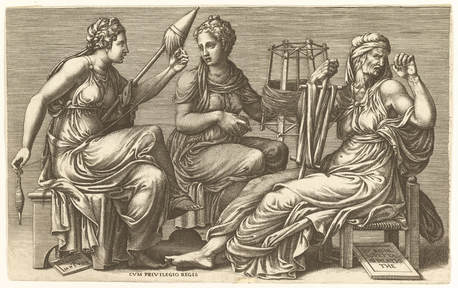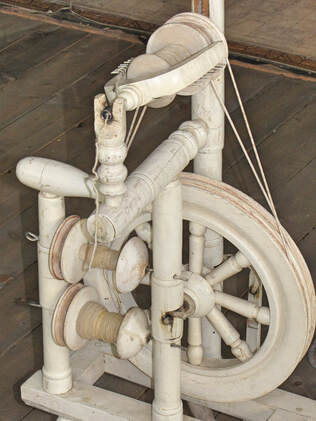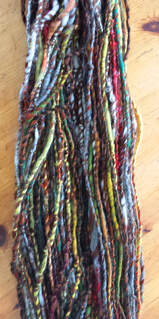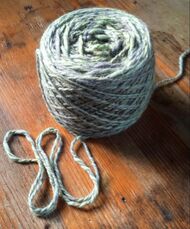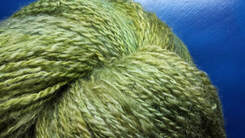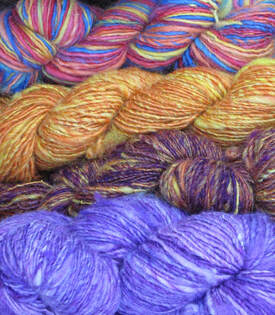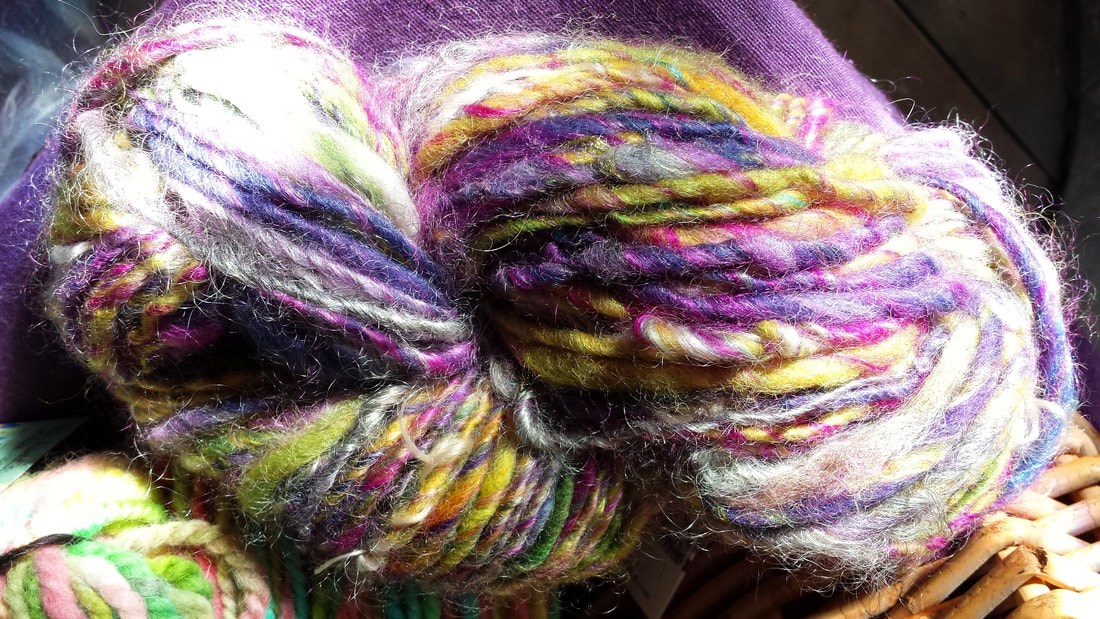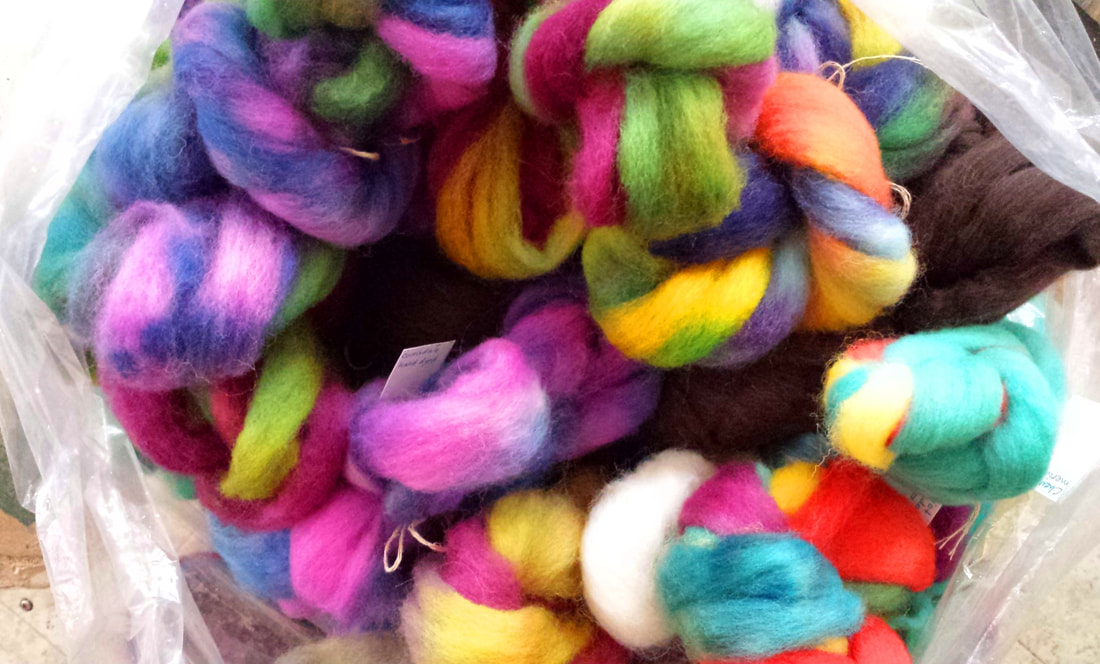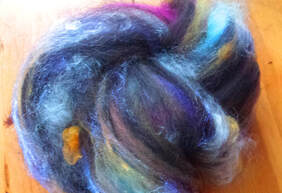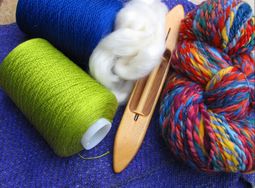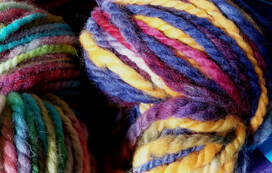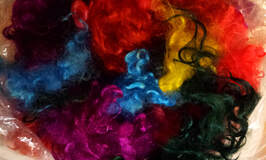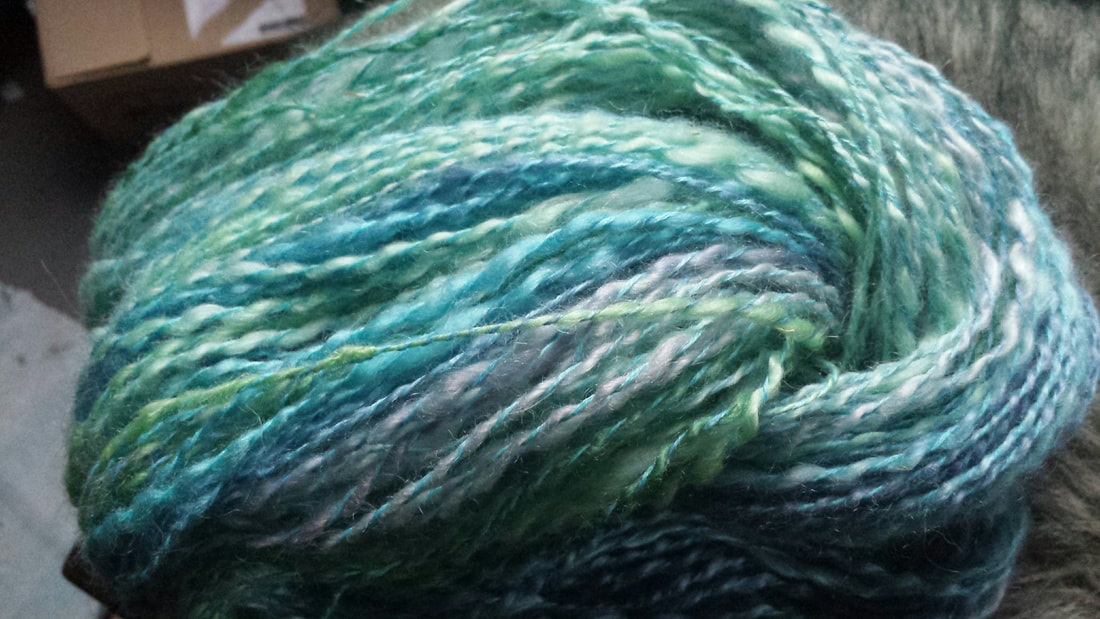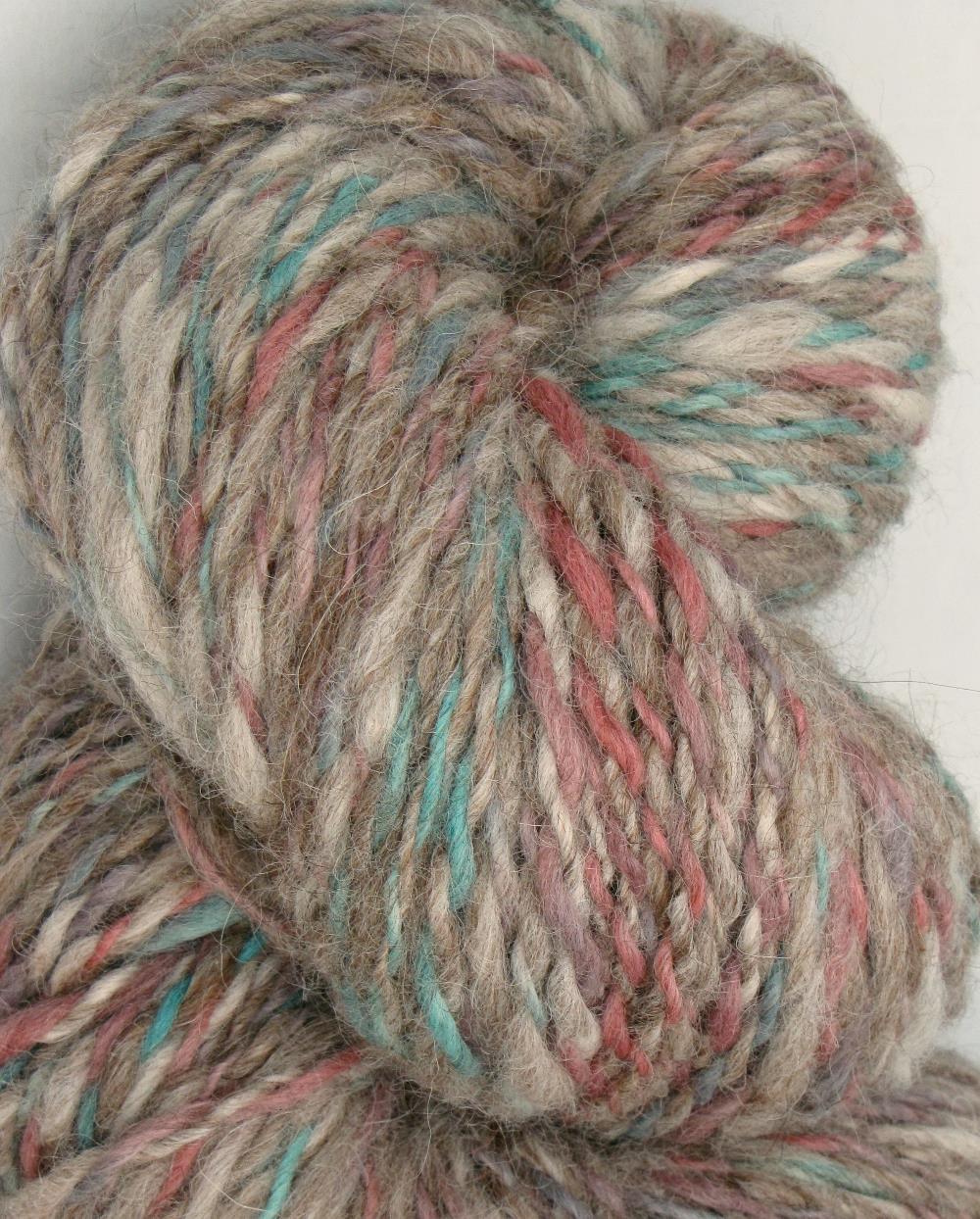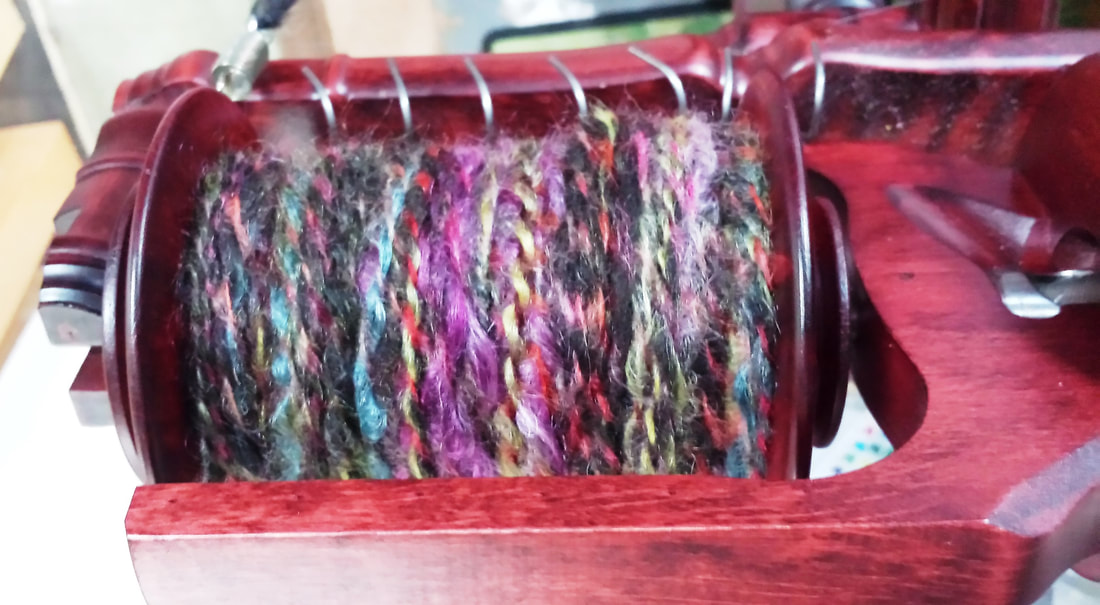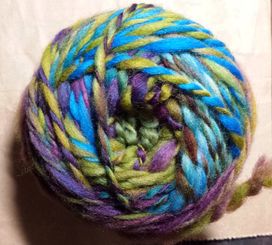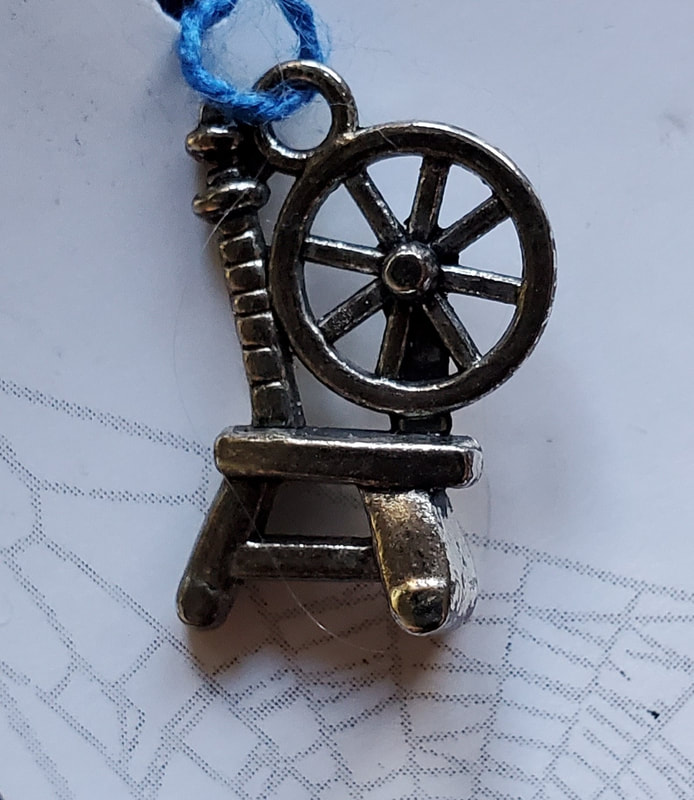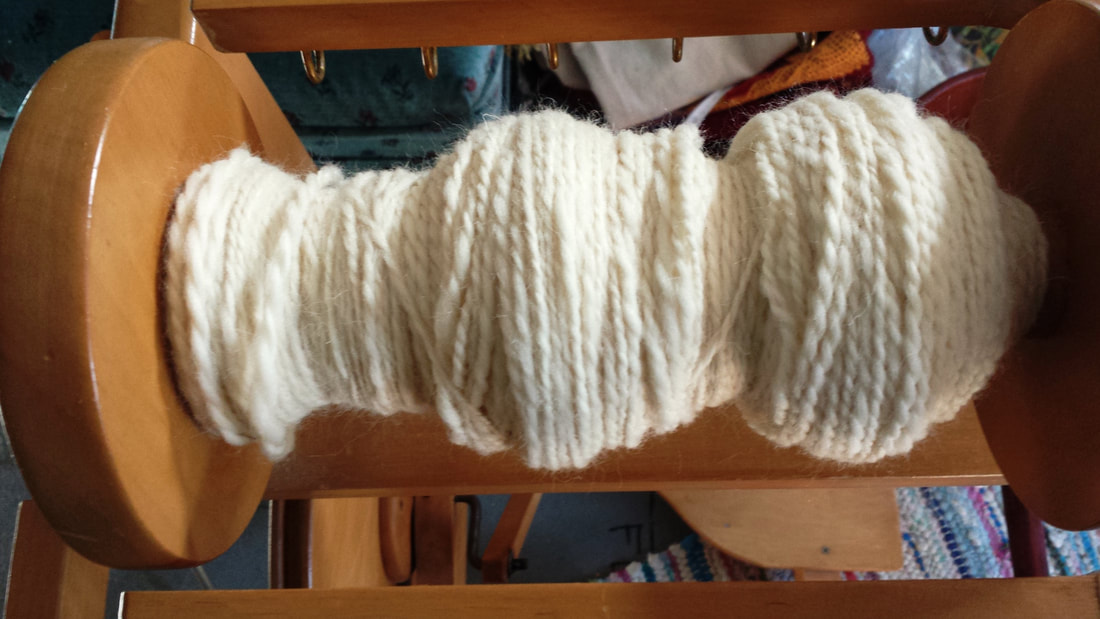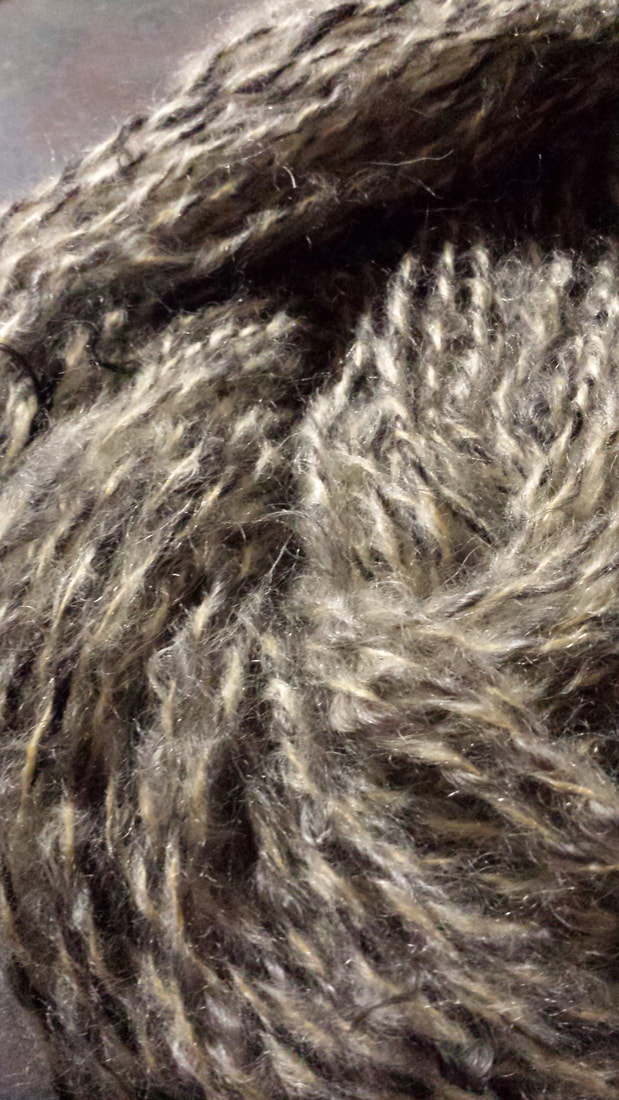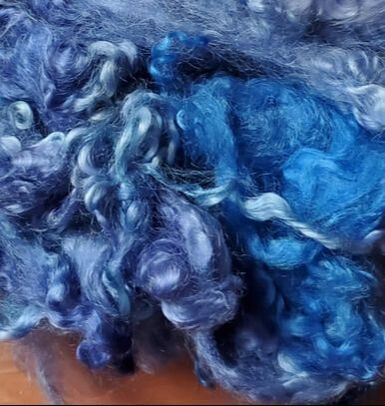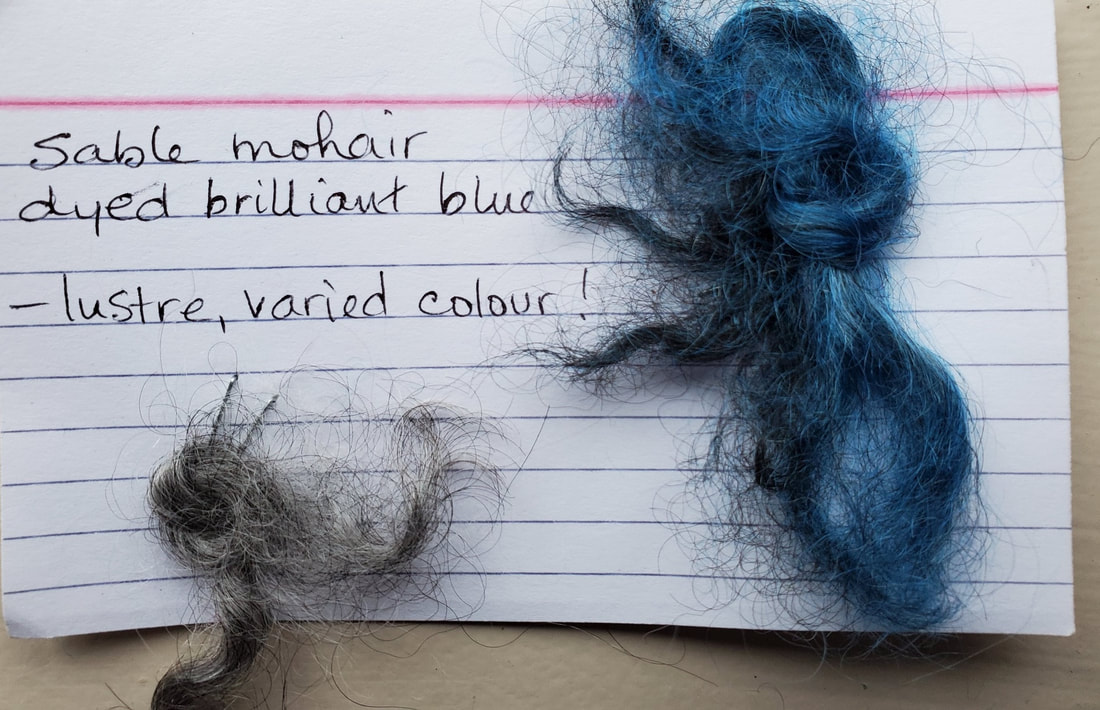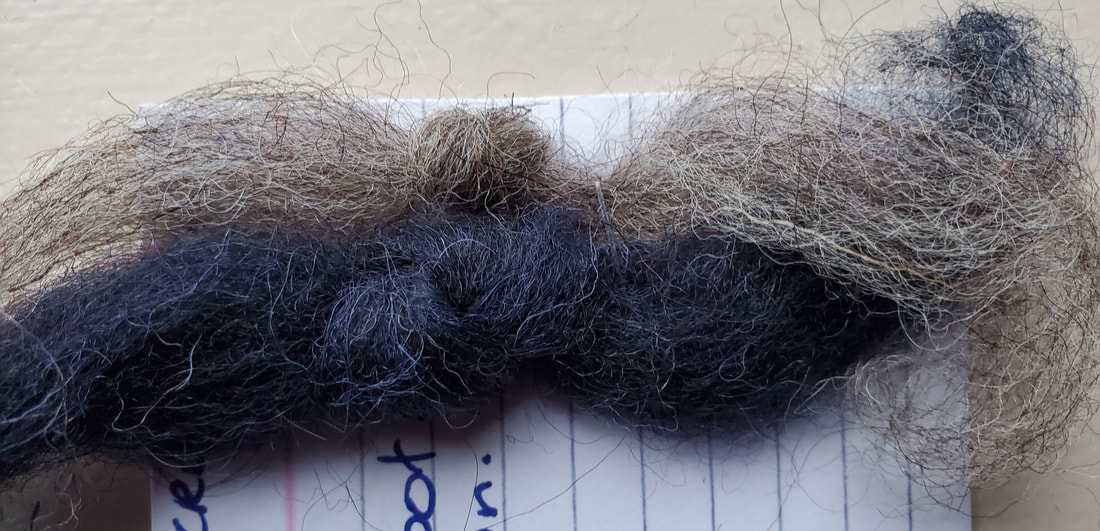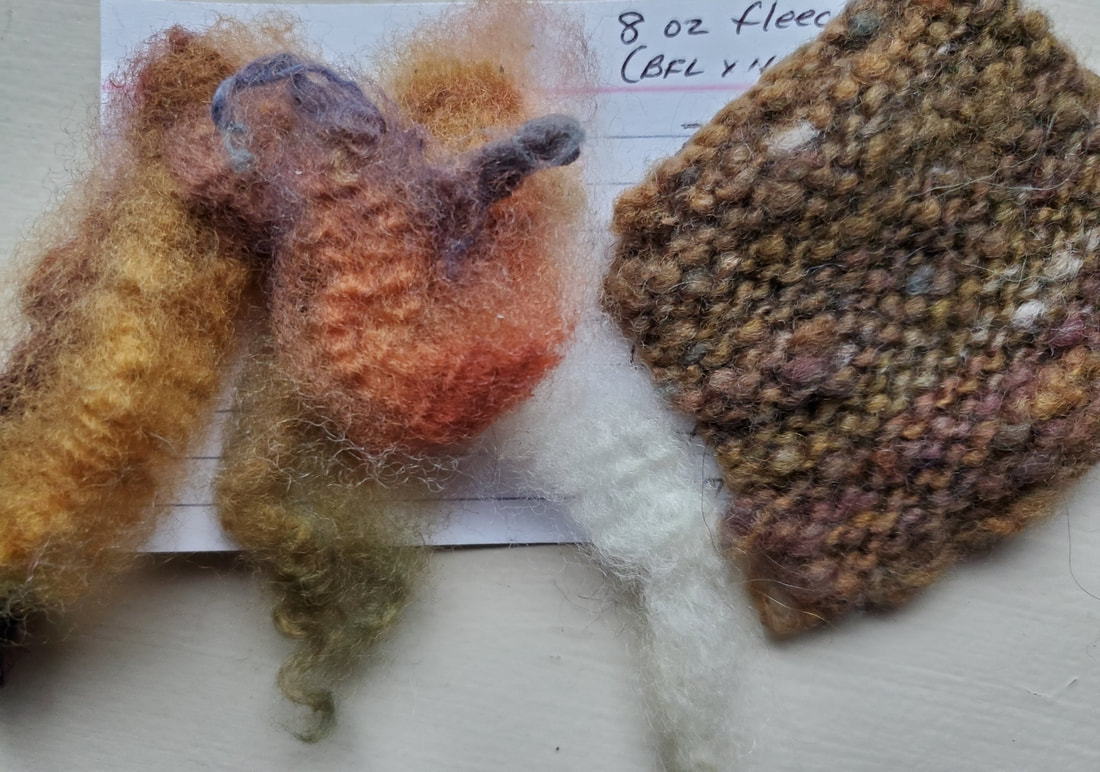Bee Glade Farm & Plant Nursery is CLOSED as of 2021.
However, we are still creating with fibre, so have a look and enjoy what is available!
Three Fates Spinning & Weaving
|
Spinning and weaving are ancient arts that encompass the globe, the tools hardly changed over the centuries.
The Greeks told of the Moirai, the Three Fates, sisters who managed the destiny of humans and gods alike. Clotho spun the thread of life, Lachesis measured how long it would be, and Atropos cut it in death. Often the sisters were illustrated as a maiden, mother and and crone. Here we see Clotho the spinner taking fibre from her distaff and spinning it onto a hand held spindle. Lachesis, the measurer or the 'allotter' has a ball of spun yarn which she is winding onto a reel, and Atropos, the fearsome cutter takes the thread of life and cuts it at a certain time and a certain way. |
|
A number of years ago, a friend was coincidentally selling the hand made spinning wheel above. I had no idea how to use it, I just knew that someday I wanted to use a tool with so much history and power behind the act of doing what my ancestors had likely done. In addition, it is a craft that is intricately enshrined within the changing seasons, as is the garden work that we do here at Bee Glade. I put it away for a couple of years and carried on with the business of growing our nursery plant business.
Then a neighbour in Glade started building a straw bale house and part of the process is to finish the exterior walls with a sand mixture... her house is in a rocky area, and ours is on sand, so I said she could help herself. We decided to trade and I found out that thirty years previous she had taught spinning and weaving! I couldn't believe my luck, especially when she hauled over her Ashford Traditional wheel and generously lent it to me for a year and was 'on call' when I got stuck and frustrated in the learning process. And that was the start of a wonderful, creative exploration that is only contained by what can be imagined!
Then a neighbour in Glade started building a straw bale house and part of the process is to finish the exterior walls with a sand mixture... her house is in a rocky area, and ours is on sand, so I said she could help herself. We decided to trade and I found out that thirty years previous she had taught spinning and weaving! I couldn't believe my luck, especially when she hauled over her Ashford Traditional wheel and generously lent it to me for a year and was 'on call' when I got stuck and frustrated in the learning process. And that was the start of a wonderful, creative exploration that is only contained by what can be imagined!
At Bee Glade Farm I spin wool into yarn and weave blankets and scarves. Fibres are silk, bamboo, cotton wool, some acrylic, silk, alpaca, mohair... I also hand dye many of the fibres...
HAND DYED FIBRE
|
Today hand dying wool, rayon, silk and cottons can be safely accomplished with acid exhaust dyes to quickly achieve colourfast fibres in the home studio.
Acid exhaust dyes require hot water and time to process, are safe to use and don't produce any noxious smells. Sciencedirect.com states that "Acid dyes are anionic organic dyes (containing sulfonate groups) that are used with organic cations such as alum to fix them to the surface of fibers." While I am unsure what anionic organic dyes are, alum is naturally occurring and is used in household applications. At Bee Glade we mostly use acid exhaust dyes, and these dyes used on sheep's fleeces and locks (as opposed to processed roving) gives some wonderful variations. Additionally, commercially purchased wools can be dyed or overdyed, and fleeces and locks that are naturally grey or silver produce different results. If the fibre has been presoaked or not makes a difference, and if the dye is added to the dye pot before or after the fibre is put in, produces different results. Although mostly consistent, some of the acid exhaust dyes like 'chestnut' and 'clay' can produce variations in the dyed fibre that are a result of the dye itself. I have done some dyeing with natural plant dyes. Some of the natural dyeing processes use urea, aluminum salts and metallic salts as mordants for a colourfast product which require extra safety measures. Of course, a person could choose to simply use the safer alum as the mordant but that would likely limit the palette of colours available to the dyer. There are pros and cons to both acid exhaust dyeing and natural dyeing, and there are many options available. |
|
Natural Dyes
|
Natural dyes can be purchased in powder or liquid form. Natural dyes usually require mordants and more processes to produce colourfast fibre. The Maiwa website says this about natural dyes:
Natural dyes are more than an ecologically smart way to add colour to yarns and cloth. Natural dyes embody the idea that there is a relationship between creativity, skill, what we make, what we wear, and the natural world. ... natural dyes are evidence that colour can be a cultural force linking individuals to history and tradition. There are many local plants, garden plants, kitchen edibles and lichens that can be used for dyeing. For example: walnut, chamomile tinctoria, weld, sumac, onion skins, marigold, broom, chestnut, buckthorn, and golden rod.
And there are excellent references out there for more information. One of the best is here in BC: https://maiwa.com/pages/natural-dyes |
|
